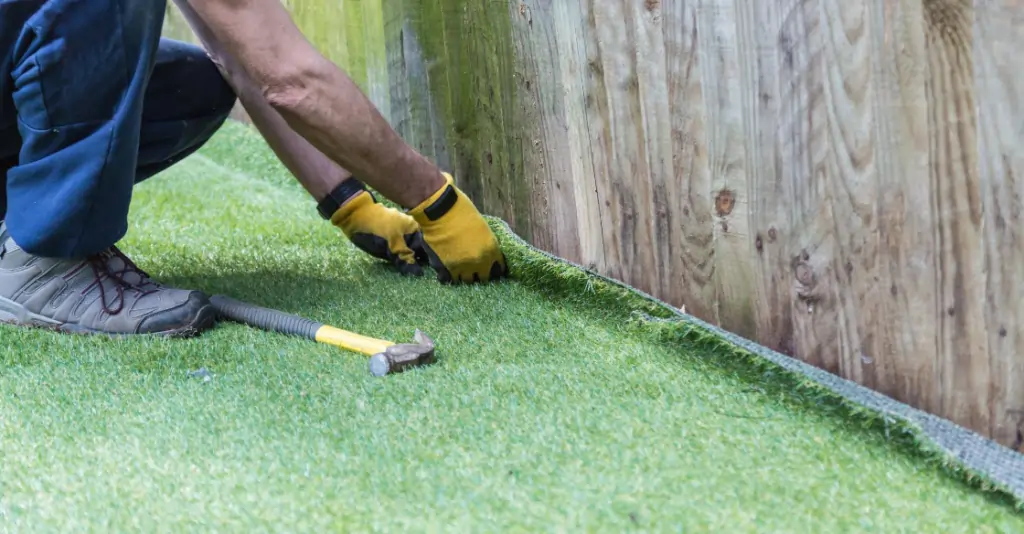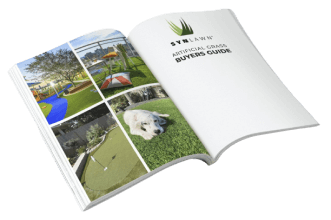Artificial turf, which first gained attention in 1966 when it was installed in the Astrodome, has now become commonly used for fields and in residential areas. While it is easy to install, it does require proper installation to look and function as intended. The following steps will get the lawn ready for an artificial turf installation.
Determine the Ground Conditions
The first step in turf installation is to figure out the ground conditions and type of soil on the area that you are planning the artificial turf installation. Determine how well it drains and what time of sand or stone aggregate will need to be added. Doing this early in the process will help have a successful installation.
Prepare the Ground
It is important to prepare the current area in order to have a successful installation. Spray areas with a weed killer about two weeks before the installation. This will make sure that all the unwanted plants are dead at the roots. Get rid of the top level of soil, about 3 inches of sod to make room for the new residential turf. All grass and other plants should be entirely removed. Using a turf cutter will help in this process.
Drainage
Artificial turf does well over soil that does drain well as the grass should be permeable to water. No water should be pooling on the existing lawn. If the lawn will be installed over a poorly-drained area, install a drainage system first. Doing so will ensure that your artificial lawn lasts for a long time.
Add the Artificial Turf Base
You will need finely crushed rock, sand, or gravel with particles under 10mm. Fill in the area with about three inches of the material to improve drainage. Approximately one cubic yard of material is needed for every 100 square feet of lawn. In an area that does not drain well, it might be necessary to add another stone layer base. If the lawn is in a residential home or playground that children will be playing at, a shock pad will help to increase the safety of the area.
Compact the Base
Another important step in the preparation process is compacting the base. The base should then be graded and compacted to make a stable base area. An electric compaction plate can be sued to make sure the area is level. This ensures that the artificial turf will lay the way it is supposed to without any sloping or caving as time goes on.

Add a Geotextile Layer
Even though the area has been filled with rock or sand, it will not prevent organic growth below the surface. A geotextile layer should be installed above or below the layer of sand or rock to prevent any natural plants from growing up into the artificial turf.
Once the ground has been prepared, the artificial turf layer is now ready to be installed. Taking the time to properly prepare the area will ensure the best outcome after the artificial lawn has been installed. Contact the experts at SYNlawn for more help or direction.

